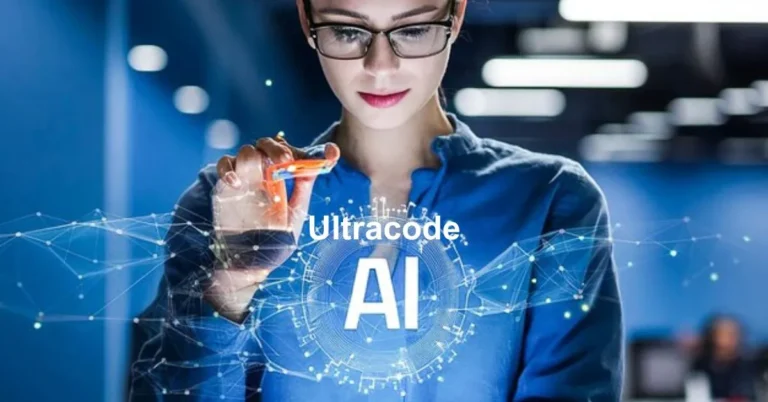In the grand tapestry of technological evolution, each era is defined by a leap in abstraction. We moved from painstakingly wiring circuits to writing procedural code. We then ascended to object-oriented design, and further to high-level scripting languages. Each step moved us further from the machine’s binary heart and closer to the fluidity of human thought. Today, we stand on the precipice of the next, and perhaps final, great abstraction: the era of Ultracode AI.
Ultracode is not a specific programming language to be learned, nor a single product to be purchased. It is a paradigm, a fundamental shift in how we interact with computational power. It represents a future where the intricate, often arcane, process of coding is replaced by the simple act of declaring intent. It is the bridge that closes the last remaining gap between what we envision and what a machine can execute.
From Assembly to Ambition: The Trajectory of Abstraction
To understand Ultracode, we must first appreciate the journey. In the beginning, there was machine code—raw binary instructions that a CPU’s transistors understood. Then came assembly language, which replaced numeric opcodes with human-readable mnemonics like MOV and JMP. This was the first abstraction.
The 1950s and 60s brought forth high-level languages like FORTRAN and C. These allowed programmers to think in terms of variables, loops, and functions, which compilers would then translate down into machine code. The programmer no longer needed to manage every register and memory address manually.
The late 20th century saw the rise of even more abstracted languages—Python, Java, JavaScript—which offered powerful built-in functions and managed memory automatically, allowing developers to focus on logic and architecture rather than plumbing. More recently, low-code and no-code platforms have enabled non-programmers to build applications through graphical interfaces and pre-built modules.
Yet, a chasm remains. Even with the most modern tools, creating complex software requires a deep understanding of syntax, logic structures, frameworks, and deployment environments. You must break your ambition down into a million precise, sequential instructions. Ultracode AI aims to vaporize this chasm entirely.
Defining the Ultracode Paradigm
Ultracode AI is a system where the input is a high-level goal or a descriptive prompt, and the output is a fully functional, robust, and deployable application. It’s the conceptual endpoint of the current trajectory of generative AI models like GPT-4 or Claude, but with profound advancements in reliability, reasoning, and autonomy.
The core tenets of Ultracode AI are:
- Intent-Based Specification: Instead of writing
for (i = 0; i < array.length; i++), you would say, “Analyze each transaction in the list and flag any that are over $10,000 for review.” The AI understands the goal, the data structure, and the required action. - Autonomous Architecture Design: The AI doesn’t just write a function; it designs the entire system. It decides if a microservices architecture is better than a monolith, which database is most suitable (SQL vs. NoSQL), and how to structure APIs for scalability and security. It reasons about the non-functional requirements implicit in your intent.
- Continuous Integration and Refinement: An Ultracode system is not a one-shot code generator. It engages in a collaborative dialogue. It might ask clarifying questions: “You mentioned ‘real-time alerts.’ Should these be via email, SMS, or an in-app notification?” It then writes the code, tests it, debugs it, and refactors it based on feedback or changing requirements—all autonomously.
- Embedded Best Practices and Security: The AI’s output is inherently secure, efficient, and maintainable. It doesn’t take shortcuts. It automatically implements OWASP security guidelines, writes comprehensive unit tests, and documents the code exhaustively because these are integral parts of “correct” execution, not optional extras.
The Engine Room: How Would Ultracode AI Actually Work?
The magic of Ultracode is not magic at all; it’s the convergence of several monumental advancements in artificial intelligence.
- Reasoning and Planning AI: Current LLMs are brilliant autocomplete systems, statistically predicting the next most likely token. Ultracode requires a leap to true reasoning engines—AI that can form multi-step plans, handle constraints, and make rational decisions. This involves techniques like chain-of-thought reasoning, tree-of-thought exploration, and advanced reinforcement learning that simulates outcomes before writing a single line of code.
- World Models and Common Sense: To translate “build a website for my bakery” into a functioning app, the AI needs a vast model of the world. It must understand what a bakery is, what its customers need (a menu, hours, a way to order), what constitutes good web design, and how e-commerce payments are processed. This requires training on a dataset far more extensive than just code—it must encompass human culture, business processes, and physics.
- Formal Verification: The biggest hurdle to trust is correctness. How do we know the generated code is bug-free? Ultracode AI would integrate formal methods, using mathematical logic to prove that a program satisfies its specifications. The AI would not just assume its code works; it would mathematically verify that it does, eliminating whole classes of bugs and vulnerabilities before runtime.
- The Self-Improving System: An Ultracode AI would be capable of meta-cognition—thinking about its own thinking. It would analyze its failures, learn from corrections, and continuously refine its own code-generation algorithms. It would read the latest cybersecurity bulletins and programming blogs, constantly updating its knowledge base and best practices without human intervention.
The Societal and Economic Implications
The advent of a true Ultracode AI would be as disruptive as the Industrial Revolution. Its impact would ripple across every sector.
- The Democratization of Creation: Ultracode would be the great equalizer. A farmer with an idea for a soil moisture monitoring system could describe it and have a working application without hiring a software firm. A researcher without a coding background could build complex data analysis pipelines. Innovation would no longer be gated by technical skill, but by imagination and domain expertise.
- The Evolution of the Developer’s Role: This is not the end of the software engineer. Instead, their role transforms from a coder to a conductor or a product manager. Their value shifts from writing syntax to formulating precise, robust, and innovative intentions. They would become specialists in problem-domain expertise, ethical AI guidance, system architecture validation, and managing the AI’s output for massively complex projects. The job becomes more strategic and less syntactic.
- Unprecedented Acceleration: The pace of technological development would accelerate at a rate we can scarcely imagine. Startups could go from idea to MVP in hours. Large enterprises could modernize legacy systems by simply describing the new architecture. The friction that currently slows down digital transformation would vanish.
- The Problem of Responsibility: If an AI-generated financial trading algorithm fails catastrophically, who is liable? The person who described the intent? The company that built the Ultracode AI? The AI itself? New legal and ethical frameworks would need to be developed to address the chain of responsibility in a world of autonomous creation.
The Challenges on the Path to Ultracode
We are not there yet. The path to Ultracode is littered with monumental challenges:
- The Hallucination Problem: Current AIs are prone to confident incorrectness. For Ultracode to be trusted, its output must be 100% reliable. Overcoming this requires fundamental breakthroughs in truthfulness and verification.
- The Complexity Ceiling: While an AI might easily generate a bakery website, could it design and code the entire backend for a new social network rivaling Twitter or TikTok? The complexity of such systems is astronomical, involving millions of interdependent components. Managing this complexity autonomously is an unsolved problem.
- The “Last Mile” Problem: An application is more than its code. It requires deployment, DevOps pipelines, monitoring, and ongoing maintenance. A true Ultracode system would need to manage this entire lifecycle, interacting with cloud providers and infrastructure seamlessly.
- Interpretability and Control: If we can’t understand how the AI reached its solution, we can’t fully trust it. We need “explainable AI” that can justify its architectural choices in human-understandable terms.
Conclusion: The Inevitable Horizon
Ultracode AI is the logical conclusion of our relentless drive to make technology more accessible and more powerful. It is the point where software ceases to be a manual craft and becomes a conversation. It represents a future where the power of computation is a utility, as readily available as electricity, activated not by flipping a switch, but by speaking a need.
The journey to this future will be iterative. We will see increasingly powerful coding assistants, more intuitive low-code platforms, and AI that can handle larger and more complex modules. Each step will bring us closer to the Ultracode ideal.
It is a future filled with both immense promise and profound questions. It challenges our notions of creativity, responsibility, and the very nature of work. But one thing is certain: the direction of travel is set. The final abstraction is coming, and it will be spoken not in code, but in ambition.

